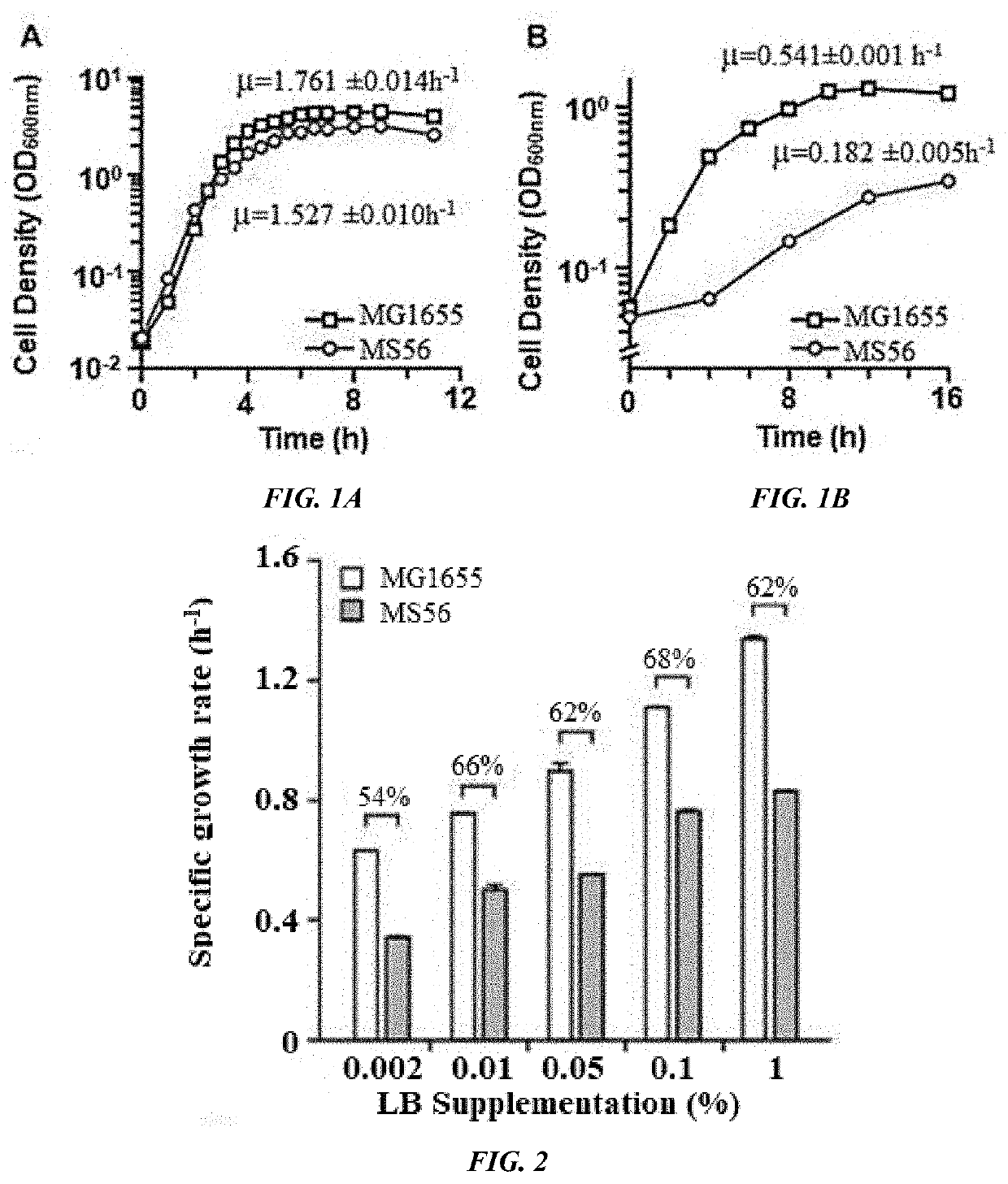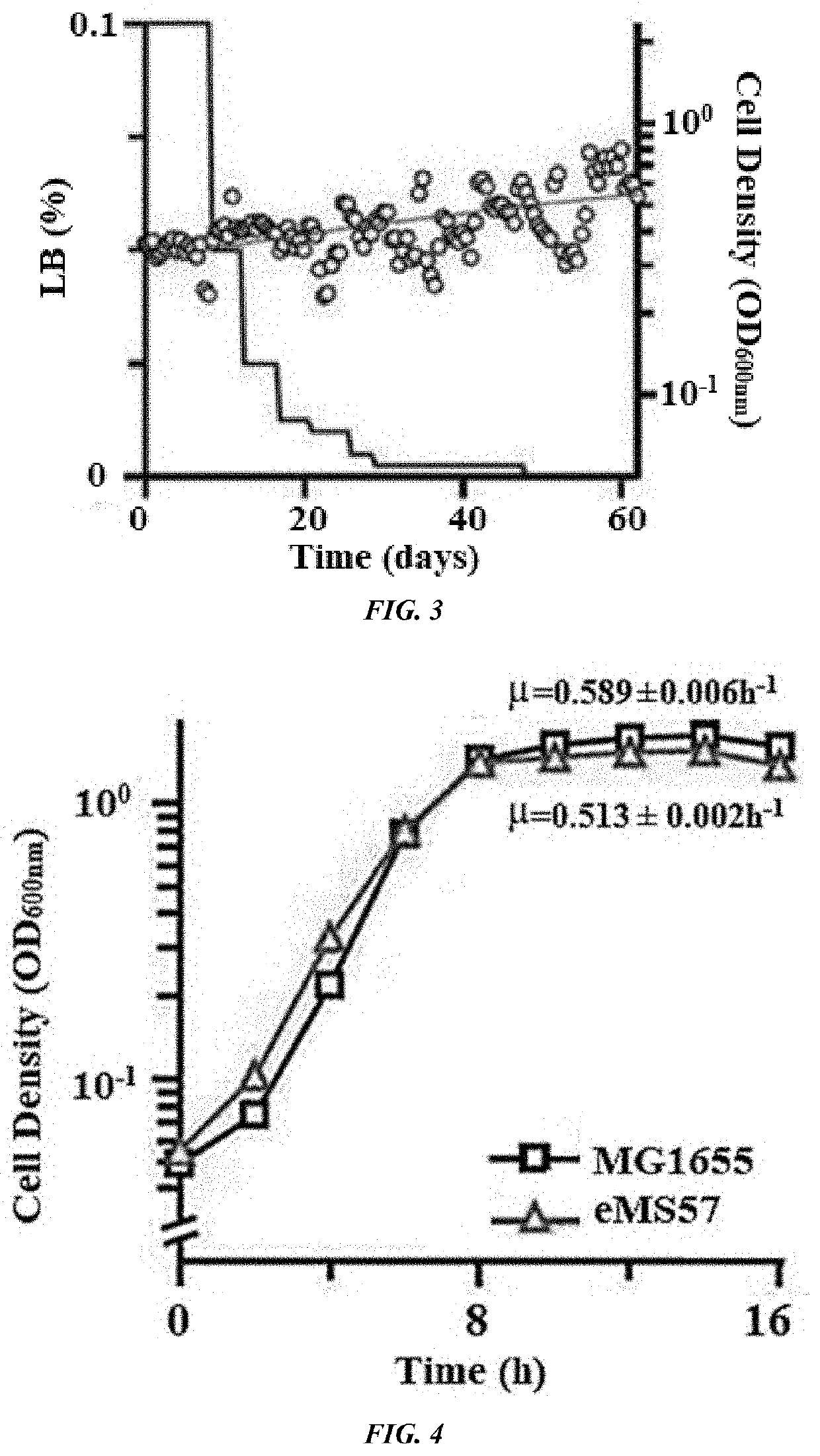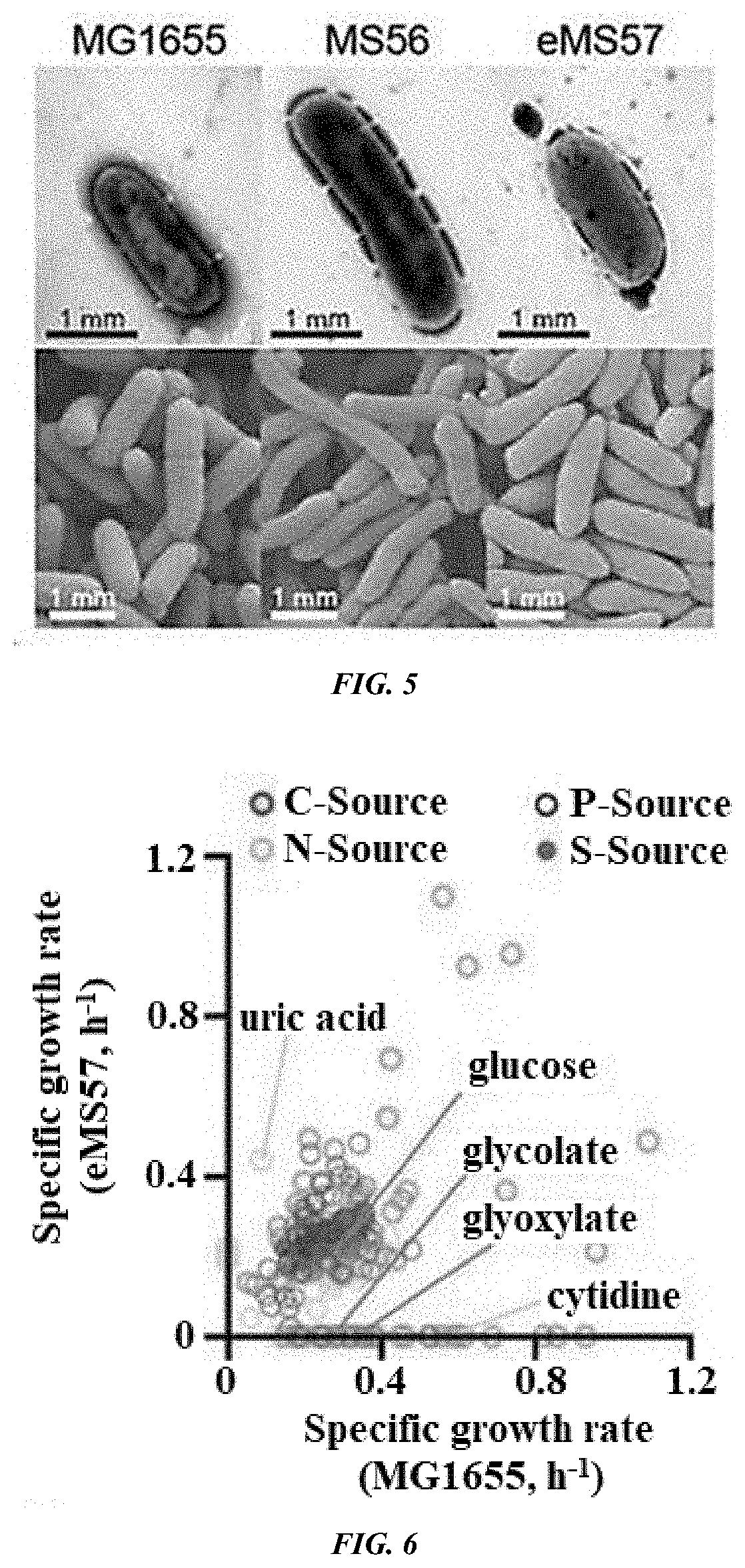Novel microorganism having minimal genome and method of producing the same
a microorganism and genome technology, applied in the field of new microorganisms with minimal genomes, can solve the problems of reduced growth rate, limited understanding, and reduced growth ra
- Summary
- Abstract
- Description
- Claims
- Application Information
AI Technical Summary
Benefits of technology
Problems solved by technology
Method used
Image
Examples
example 1
n of eMS57 Strain Having Minimal Genome and Excellent Growth Rate
[0056]To produce a strain having a minimal genome while exhibiting a high growth rate. ALE was used. Specifically, ‘MS56’ strain having a minimal genome size (about 3.6 Mbp) which was created from the systematic deletion of 55 genomic regions of a wild-type E. coli ‘MG1655’ strain was used as a starting strain of ALE.
[0057]Meanwhile, E. coli MS56 was grown in an M9 glucose medium at 37° C. with agitation. Cultures were transferred to fresh medium every 12 hrs at an initial OD600mm of approximately 0.005. The growth rates of MS56 and MG1655 were examined, and as a result, MS56 exhibited a comparable growth rate to MG1655 in a rich medium, but it showed severe growth reduction in a minimal medium (FIG. 1).
[0058]As described, since MS56 showed the low growth rate in M9 minimal medium, it was intended to produce a strain showing a high growth rate in the minimal medium while having a minimal genome. First, the medium was s...
example 2
c Examination of eMS57
[0060]For phenotypic examination of eMS57, morphology was compared between eMS57, MS56, and MG1655 using electron microscopy.
[0061]1 mL of exponential phase culture was prefixed in 2.5% paraformaldehyde-glutaraldehyde mixture buffered with 0.1 M phosphate buffer (pH 7.2) at 4° C. for 2 hrs. The prefixed sample was treated with 1% osmium tetroxide solution buffered with 0.1 M phosphate buffer (pH 7.2) for 1 hr at room temperature (25° C.). The fixed sample was dehydrated in ethanol, substituted by isoamyl acetate, and critical point-dried in liquid CO2. The sample was finally sputter-coated with gold in a Sputter Coater SC502 (Polaron, Quorum Technologies, East Sussex, UK) to 20 nm thickness, and SEM images were obtained using the FEI Quanta 250 FEG scanning electron microscope (FEI, Hillsboro, Oreg., USA) installed at the Korea Research Institute of Bioscience and Biotechnology at a 10-kV acceleration voltage. For transmission electron microscopy, a sample fixe...
example 3
on of Utilized Nutrient Source
[0063]To examine the kinds of nutrient sources utilized by eMS57, characteristics were examined in each strain of eMS57, MS56, and MG1655.
[0064]First, phenotype microarray was examined by the following method. Each strain was dispensed on BUG (Biolog Universal Growth) agar, and grown overnight at 37° C. Then, cells were diluted with Inoculating Fluid A (80% IF-0a GN / GP Base) to 42% transmittance. A cell resuspension of 42% transmittance was diluted with 5× Inoculating Fluid B (83.33% IF-0a GN / GP Base and 1.2% Biolog Redox Dye mix A) to generate a cell resuspension of 85% transmittance Thereafter, 19.8 mM of sodium succinate and 1.98 nM of ferric citrate as carbon sources were added to Inoculating Fluid B. and 100 μL of the cell resuspension of 85% transmittance was inoculated onto PM plates and cellular respiration was measured.
[0065]As a result, eMS57 showed a narrower spectrum of nutrient utilization for carbon, nitrogen, phosphorus, and sulfur source...
PUM
| Property | Measurement | Unit |
|---|---|---|
| Fraction | aaaaa | aaaaa |
| Fraction | aaaaa | aaaaa |
| Fraction | aaaaa | aaaaa |
Abstract
Description
Claims
Application Information
 Login to View More
Login to View More - R&D
- Intellectual Property
- Life Sciences
- Materials
- Tech Scout
- Unparalleled Data Quality
- Higher Quality Content
- 60% Fewer Hallucinations
Browse by: Latest US Patents, China's latest patents, Technical Efficacy Thesaurus, Application Domain, Technology Topic, Popular Technical Reports.
© 2025 PatSnap. All rights reserved.Legal|Privacy policy|Modern Slavery Act Transparency Statement|Sitemap|About US| Contact US: help@patsnap.com



